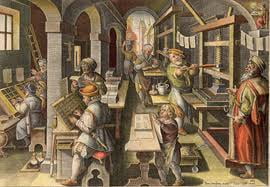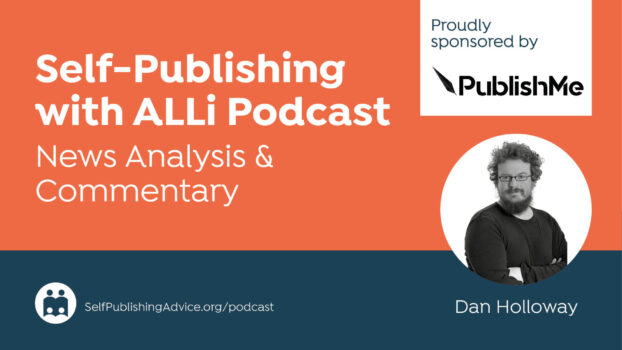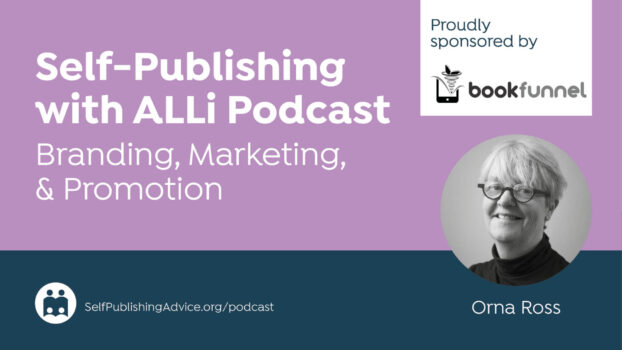
Roz Morris shares the benefit of her experience running an editorial department for a publishing house
One of the many joys of being an indie author is that we are free to make our own decisions, without the constraints that a traditional publishing contract might impose upon our books. But we should be wary of entirely dismissing the way that trade publishers operate. Their ways of doing things arose for a reason, and not all of those reasons are at odds with what we are trying to achieve when we assume the role of publisher ourselves. Sure, we don't have shareholders to serve – but, like traditional publishers, we want our books to be the best they can be.
So when ALLi Professional member Roz Morris said recently; “Embracing the traditional publishing process is still the best way to ensure a book has proper development, error-catching and finessing”, we asked her to expand on this in a guest post. Here she draws on her experience as the former manager of a trade publisher's editorial department, as well as her career as a successful ghostwriter, non-fiction author and novelist.
5 Stages of Traditional Production
In traditional publishing a manuscript goes through five stages:
- Developmental editing
- Copy editing
- Proofreading
- Design and formatting
- Proofreading again – as many times as necessary
Why so many? Because each phase is a different – and necessary – kind of finessing.
In each phase, we think in different ways.
1 Developmental editing checks the content suits the readership. For fiction, are the characters and plot fully realised and in tune with its niche? Are the writing style and tone appropriate? For non-fiction, is the coverage complete enough and how does it stand up next to comparison titles? Does it need more content? Conversely, should it be split into two books? Are sections of it redundant? Developmental editing is about making the book a satisfying read.
2 Copy editing – with the content locked down, we start nitpicking. We look for accuracy, consistency and correct English use – anything from unclear sentences to timeline mistakes to plot implausibilities to factual queries (and goofs). Does a character change their name or spelling? This is a surprisingly common mistake with fiction, where we might reimagine from draft to draft, or splice characters together. If your developmental edit resulted in a lot of restructuring, you might have a mare's nest of mistakes you'd never think to look for. The copy edit finds them. It also imposes a house style for spellings or usages where there is more than one correct option. Are you using single or double quotes for dialogue? Why do we bother with this? Because these glitches will trip the reader up and stop them trusting your text.
3 Proof-reading – a necessary mop-up after all your retyping, section-moving and query-answering.
4 Design and formatting – now the text is finalised we can make the book. For a prose ebook there's minimal design needed; an ebook with diagrams may need more design attention. If you're making a print book, each page has to be checked to avoid ugly accidents like short lines marooned at the top of a page (widows and orphans). A non-fiction book with illustrations, crossheads, charts or other design features will need intensive design input, which will include massaging the text with line breaks or headings to present the content attractively.
5 A final proofread and formatting check. You might need to do this several times. Because after all that fiddling, something is bound to have gone awry.
Think Serial Tasking – Not Multi-Tasking
So it's probably clear why you can't do all the phases at the same time:
- It's kinder to our brains.
If you're thinking about plot arcs, it will drive you nuts to check for your wrong homonyms too, and you won't do either job well. I can do all these production jobs, but I'd never attempt them all at the same time. Of course if your spelling and grammar are weak, a developmental editor might warn you to pay close attention to them later, perhaps with a dedicated pass, but they probably won't tackle them until the proper time. - Each phase usually throws up a lot of work for the author.
After the developmental edit, you might have to research further, change a character's role, move a setting to a different geographical area. Large parts of the manuscript might change. So there's no point in checking for consistency and accuracy (copy editing) until the content is finalised.
Sadly, I meet authors who get everything the wrong way round and pay the price.
They might begin by hiring a proofreader, then decide they need help from a developmental editor, who then recommends wholesale rewrites, which chews up all that expensively checked text.
The Critical Path Of Book Production
It’s like building a house:
- You can't start dressing the rooms until it's decorated
- You can't decorate it until the walls are up and the power sockets and pipes are in
- You can't know where the walls, power sockets and pipes should be until you understand how the house will be used by its occupants
At its heart, the traditional publishing process is about giving the reader the best possible experience, and tackling the tasks in a way that makes logical sense for the writer and editors. And not paying for something you’ll need to undo later.
OVER TO YOU Do you have any top tips about the production process to add to Roz's excellent advice? Please feel free to share them here!
Why indie #authors should embrace the 5 traditional steps of book production - by @Roz_Morris Share on XOTHER GREAT ADVICE ABOUT BOOK PRODUCTION
From the ALLi Author Advice Center Archive
https://selfpublishingadvice.org/category/production-distribution-advice/





Loved the love you put into this article for each step. I needed this for a project, she told we can pick something and write the steps of it’s manufacturing and this helped out a TON
-Love from India
Wish you the Very Best
Love the idea you shared about “serial tasking,” rather than multitasking. What a great, clear concept! These are all important steps and stages…some can be frustrating for an author but the results are definitely worth the extra work and effort.
Thank you! As a copy editor and proofreader, I appreciate your explanation of the steps involved in publishing a book, and that you have included the value of each step. I will be sending writers to your page/article for corroboration of the process.
Best always-
Thank you, Polly!
⠀